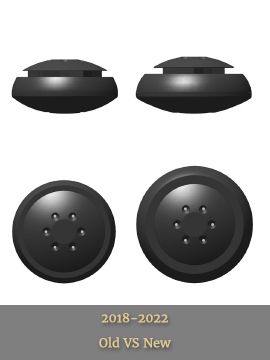Celebrating 45 years
1975 – 2020
Told by Johan Skjellerup,
president of DesignerTag International
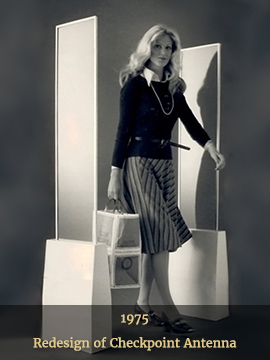


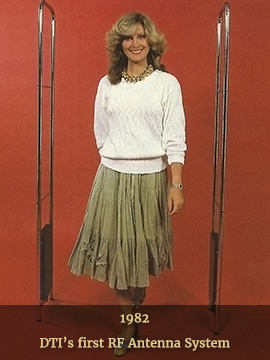
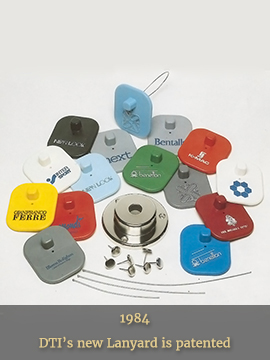
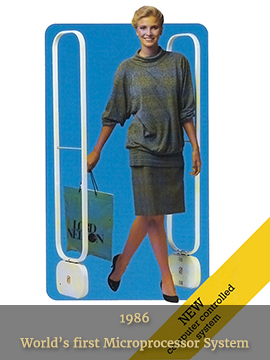
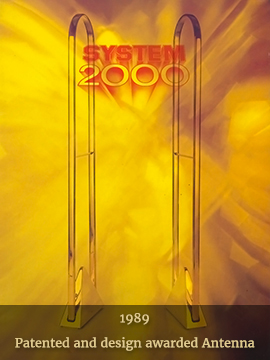
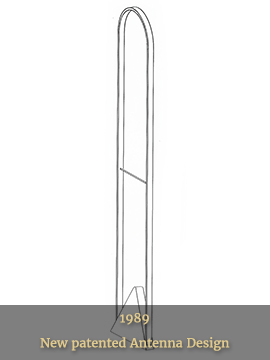
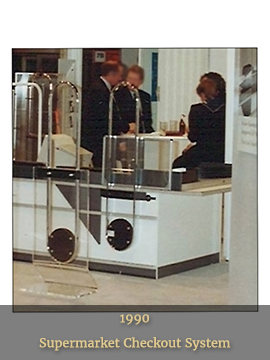
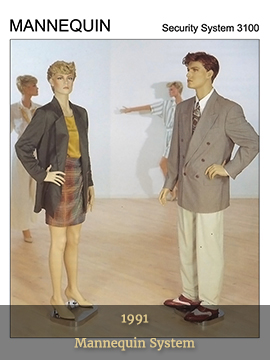
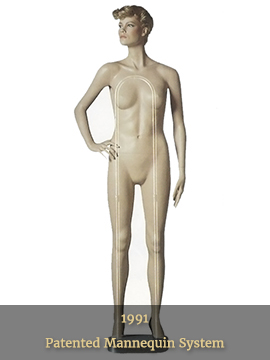
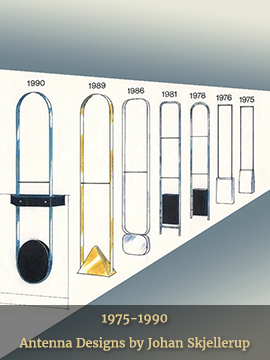
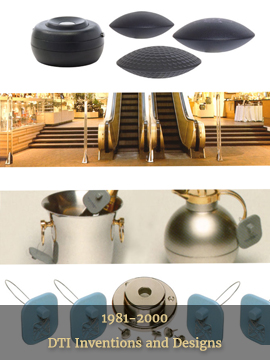
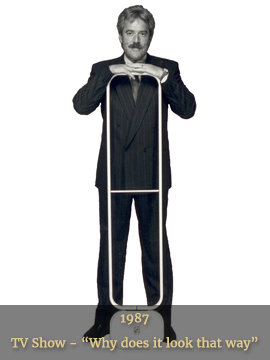
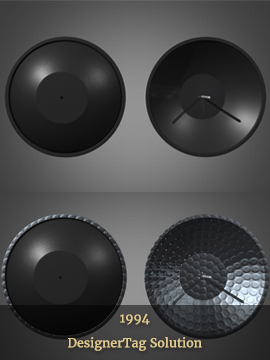
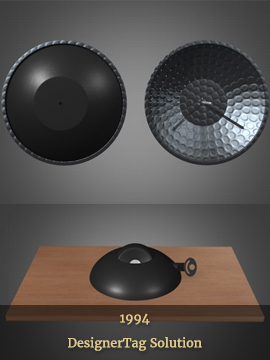




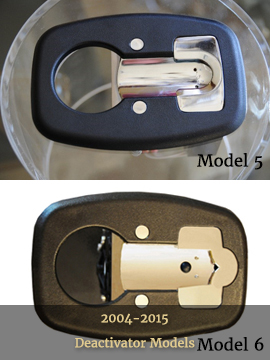
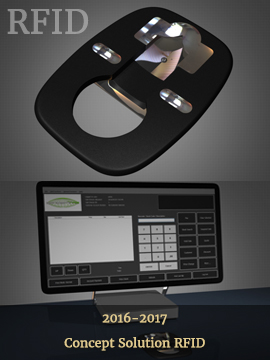

Our history

I started August 1st, 1975, as the Checkpoint Systems' distributor for Scandinavia. From an early start, I redesigned their antenna system and introduced the commercial Soft Tag. These ideas lead me to make further advancements in security innovation such as the first Chrome Look Antenna System in 1978, where I designed the antennas using my own commercial designed Soft Tag.
When Checkpoint introduced the 4x4 label, I convinced them to manufacture their first Hard Tag using that label. We needed a hard tag to compete with Knogo so it finally saw the light in 1979. In 1980, I had a conflict of interest with Checkpoint which lead me to develop my own line of EAS products.
I partnered with an engineer and developed the electronics for our new EAS system. I designed and manufactured a new Antenna System and together, we also designed and developed a new Hand Held Detector.
Then I learned about an Italian company MAINETTI, the biggest plastic HANGER manufacturer in the world at that time. This company had a very unique system to create LOGO hangers.


I decided to create a true LOGO HARD TAG. It was also the smallest. Finally, I designed a new Detacher which could be mounted on top of the counter, through the counter or on the wall.
At that time (1981), one of the most well-known department stores in Copenhagen, DAELLS VAREHUS, decided to install EAS. We had not finished the development yet, so during my meeting with the owners and directors of DAELLS, I showed up with one antenna, a piece of electronics and a few tags. We were talking about the biggest, single installation in the world – 60 systems with more than 10 KM of coaxial cable and a specially developed MASTER to run it all. Luckily, I convinced everyone that we could handle this installation – and we did!
A couple of years later, I introduced and patented the Tag Wire (lanyard) as well as a new size of tag. It was developed together with Eddie Stenild (Eddie had also developed the locking mechanism to the LOGO Tag). It was a simple, unique construction where the wire was pushed through a hole in the tag (locked) and then put directly into the Clutch Mechanism. A year later all competitors’ tags seemed to have the same hole and lanyard.


I started a new relationship with a Swedish engineer who had his workshop in Malmo. He developed the first Microprocessor controlled electronics in 1985 which was mounted in a NEW ANTENNA DESIGN. The unique part of this development was that we now could synchronize the antennas through the Power Supply which made it much easier when installing cables.
Due to far better electronics as well as antenna construction, we also obtained more distance between the antennas as well as better detection. We reduced the Falls Alarms by sweeping 120 Hz where our competitors were sweeping 85 Hz.
Another interesting story in regards to marketing happened to me by accident. On a return flight from Hamburg, I sat next to a renowned artist, Per Arnoldi, who had a TV program called “WHY DOES IT LOOK THAT WAY”.
I complimented him on his program. Through conversation, he learned about my work and asked me if I would be interested in appearing on his TV program. I was able to capitalize on this 30 minute program and inform retailers about my products.


In 1989, I designed the award winning ANTENNA DESIGN. It was received extremely well especially in one of the most famous designer department stores, ILLUM’S BOLIGHUS (a part of ROYAL COPENHAGEN). We installed the whole department store with this antenna design and it’s still there more than 25 years later.
Later in 1990, I added the Checkout System to my designs which again was synchronized through the Power Supply.
Finally, in cooperation with one of the leading Mannequin manufacturers, HINDSGAUL MANNEQUINS A/S, I developed the MANNEQUIN SYSTEM. The EAS system was hidden inside the mannequin, preserving the open and welcoming store entrances.
The MANNEQUIN SYSTEM was developed after I sold my Danish Company to Esselte Meto in 1990. I worked for this company as a consultant for 3 years trying to introduce several new ideas.


In 1993, in a difference of design visions, we decided to go our separate ways. After extensive analysis of the EAS Concept, I decided the most important part was the HARD TAG. If the Hard Tag wasn’t perfect, it could be easily removed and any other part of the EAS concept would be deemed worthless. The choice was clear, all my time had to be put into developing the best Hard Tag ever. I looked at solutions from both a security and aesthetics point-of-view. Starting with 2 equal halves, I compared the height with other existing hard tags and found that this would be much too “bulky”.
Then I discovered that the one half (PinHead) was hallow and I could move approximately 40% of the mass of the TagHousing into the hallow PinHead. By doing so, I got the correct height, BUT all of a sudden I had created a much safer hard tag solution – THE PERFECT DESIGN. The DesignerTag was born!
The DesignerInktag wasn’t the first choice. It came later as I was convinced that the present design and construction was more than enough for a perfect level of security. I was pushed heavily to add the DesignerInktag and finally did so, which turned out to be a great decision.


More than 85% of all tags are sold as InkTags. Another important safety feature added to this unique product was the SUPER CLUTCH MECHANISH as well as the patented BurnSafe Technology. As stated: NO OTHER ANTI-THEFT TAG OFFERS SUCH A HIGH LEVEL OF SECURITY! From 1996 till 2003, we added a number of tag sizes to the DesignerTag family: DesignerGolftag, DesignerInktag-Golf, DesignerMeditag, DesignerInktag-Medi, DesignerMicrotag, DesignerInktag-Micro, DesignerInktag-Micro/ALU, DesignerInktag-Nano.
Finally, I designed and developed new DesignerTag Detachers which matched the DesignerTag Design and could be completely secured by its internal, turnable magnet. It was developed with our Hard Tag Manufacturer through 17 years (ended 2013), Dong Li. The Designer Detacher has both an RF as well as an AM label mounted inside to avoid theft.
More than 150 million DesignerTags have been sold by DesignerTag International. The DesignerTag is now the most copied Hard Tag in the history of the EAS. Probably 300 – 400 million have been sold as copies.


In 2003, I had an idea for a DISPOSABLE HARD TAG CONCEPT. I contacted Eddie Stenild, knowing that this was a very complicated, mechanical development. Eddie and I had worked together on and off since 1979. Together, we started developing a new system for an inexpensive tag, which could be recycled after just one use, but we found that security is far more important than price.
With every new model we got better security as well as better detection – both very important factors! As it shows in the photos, we moved from a slim tag design towards a DesignerTag design early 2010. Then we decided, due to the recession, that a Disposable Hard Tag wasn’t the right solution in the present economic environment.
So, we renamed the product to CONCEPT SOLUTION, completely rethought the idea and went with the 3-ball clutch mechanism knowing that this locked the best on smooth PinShaft. It took us a few years to reach a well working mechanical solution and we spend another 14 months upgrading the Concept Solution after the first prelaunch early 2014.


The idea of how to open the tags (disposable or reusable) was more or less the same from the very beginning. How to hold the tag while opening changed a lot and so did the visual design! We realized that we couldn’t place a solid Deactivator at the checkout desk in a modern retail store, so we had to make it a build-in. We went through a great number of Deactivator designs before finally ending up with the BUILD-IN MODEL! It really happened when I was travelling from Copenhagen to Stockholm to a meeting with H&M. Sitting in the airport with the latest model (model 3) I felt that this wasn’t correct. I telephoned Eddie and suggested to build it into the counter taking up no space. He agreed to my suggestion and said it was no problem. So the BUILD-IN MODEL was born.
We were still working with movable jaws which locked around the tag holding it tight when opening. Eddie wasn’t happy with this system and it was later changed to today’s model. We also tried to combine Bar Code reading with the early tag models. That’s why we are combining a Bar Code reader with the opening of the tag. The STAND holding the Bar Code reader is completely flexible and can be moved in all directions. In the end, we dropped the Bar Code knowing that the future was RFID.


Another important point is the PinHead which is by far the strongest of any in the EAS market. It’s almost impossible to cut. The Concept Solution is better than ever and in my opinion more or less without competition. No product within the EAS Industry has been developed over such a long period, being so thoroughly tested and further protected by 22 patents in US, 6 Patents in Europe (2 by 2 patents were combined) and 6 in the Far East.
In 2019 there was a strong request for a smaller version of the Concept Tag. It wasn’t easy as the Concept Tag Clutch Mechanism took up a lot of space. I had to redesign the RF Coil, and for the AM we found a common solution for both AM50 and AM45. These redesigns gave the 45mm Concept Tag the same detection as the 50mm. I also added the 45mm RFID PinHead having the same detection as the 50mm. We expect the 45 mm size to be the future bestseller as Retail customers generally prefer the smaller sizes.

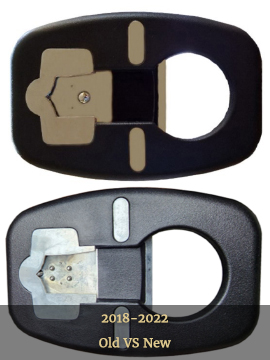
We have also made some serious upgrades from 2019 to 2022 on the Concept Tag making it even more secure. This in combination with the first major upgrade of the unique Concept Deactivator to prepare for the Self-Serving Store Concept using REAL RFID. We needed a solution with the optimal security but still being foolproof. The new upgraded Concept Deactivator will secure a perfect locking/positioning of the Concept Tag during the opening process. The whole idea is that a person shopping in a Self-Serving Store or a Semi/Self-Serving Store can use the Concept RFID Deactivator without any prior knowledge. FOOLPROOF!
This is the future of REAL RFID, a combination of RFID/EAS combined in a single tag – The Concept RFID Tag.
Also, based on strong requests from our Fashion Retail customers, we decided to extend the Concept family adding the 45 mm size matching the 50 mm in all categories. I succeeded getting the same rate of detection in the 45 mm redesigning important parts. The 45 mm is expected to be our new bestseller.
It has been a lifelong journey (still is) with more than 45 years of experience, all of which have been used to forge such unique solutions.
Founder, CEO & President DesignerTag International